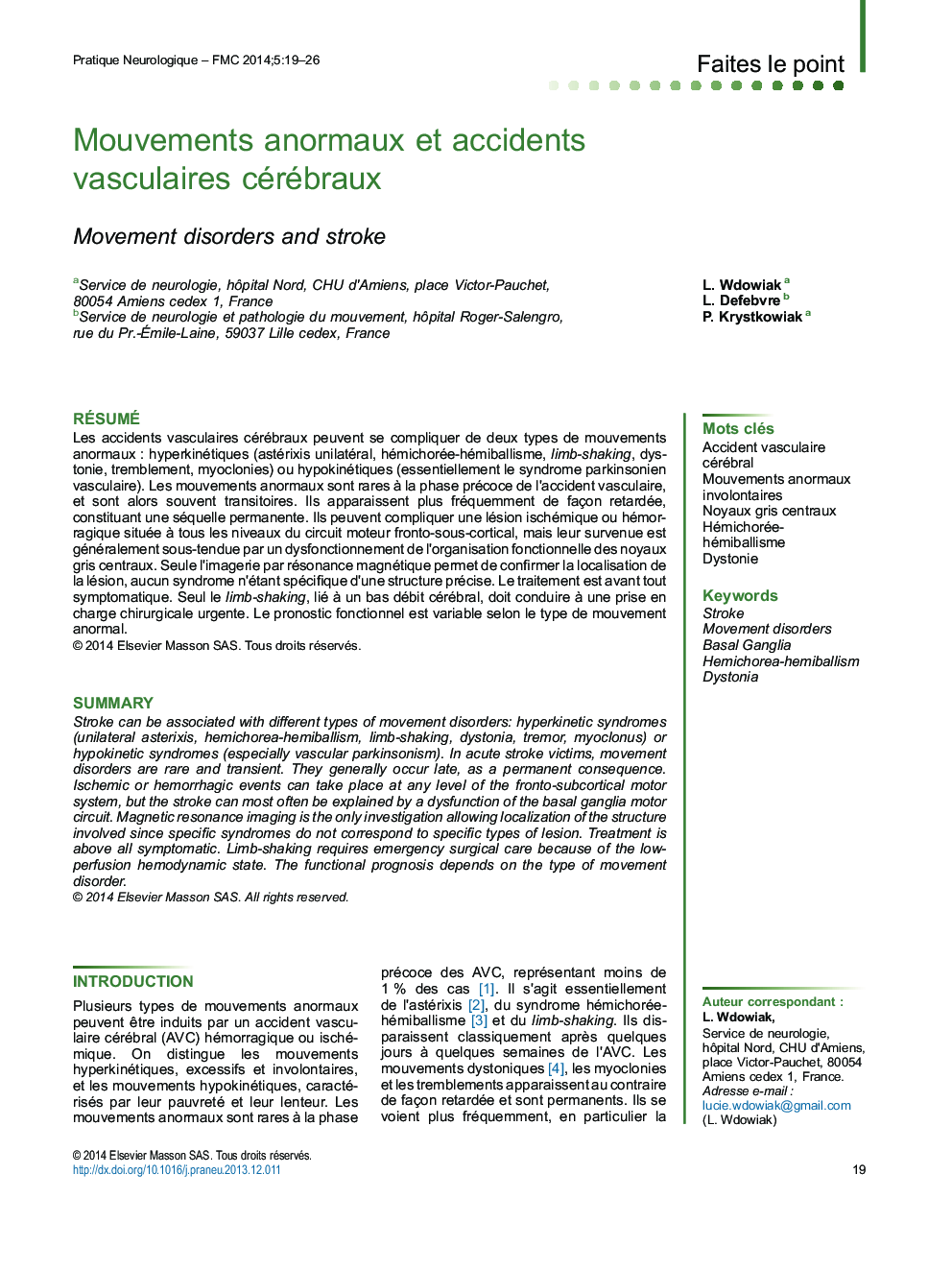| Article ID | Journal | Published Year | Pages | File Type |
|---|---|---|---|---|
| 3087284 | Pratique Neurologique - FMC | 2014 | 8 Pages |
Abstract
Stroke can be associated with different types of movement disorders: hyperkinetic syndromes (unilateral asterixis, hemichorea-hemiballism, limb-shaking, dystonia, tremor, myoclonus) or hypokinetic syndromes (especially vascular parkinsonism). In acute stroke victims, movement disorders are rare and transient. They generally occur late, as a permanent consequence. Ischemic or hemorrhagic events can take place at any level of the fronto-subcortical motor system, but the stroke can most often be explained by a dysfunction of the basal ganglia motor circuit. Magnetic resonance imaging is the only investigation allowing localization of the structure involved since specific syndromes do not correspond to specific types of lesion. Treatment is above all symptomatic. Limb-shaking requires emergency surgical care because of the low-perfusion hemodynamic state. The functional prognosis depends on the type of movement disorder.
Keywords
Related Topics
Life Sciences
Neuroscience
Neurology
Authors
L. Wdowiak, L. Defebvre, P. Krystkowiak,
